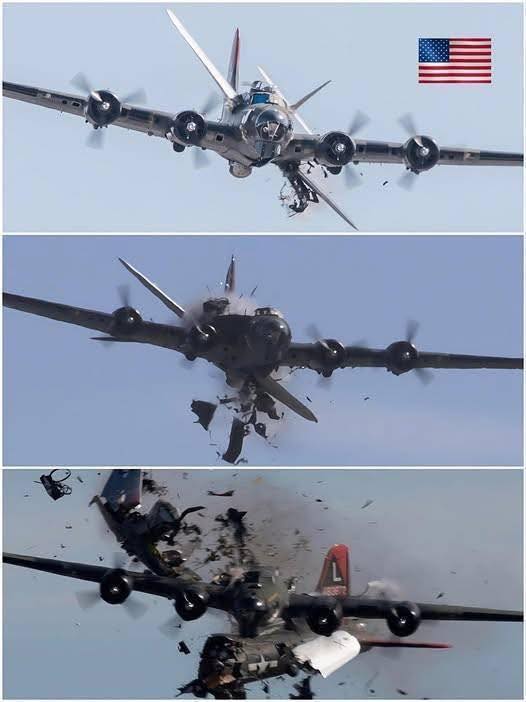In November 2022, a tragic incident shook the aviation community and onlookers alike when a devastating mid-air collision occurred at an air show in Dallas. Spectators who had gathered to witness the annual celebration of aviation history were met with shock and sadness as two iconic World War II-era aircraft — a B-17 Flying Fortress and a P-63 Kingcobra — collided unexpectedly in the sky during a commemorative flight.
The event was being held to honor and remember the valor, sacrifices, and technological advancements of American aviation during the Second World War. The air show was filled with anticipation and excitement, with enthusiasts and families alike marveling at the sight of these historic aircraft flying in formation, showcasing their strength and grace from a bygone era. Both planes, meticulously maintained to preserve history, were flying in close proximity, performing maneuvers that had been practiced countless times before, meant to pay tribute to the brave servicemen who fought in the war.
However, in a heartbreaking turn of events, tragedy struck. Witnesses recall the moment when the two aircraft suddenly collided in the clear blue sky, a horrifying spectacle that unfolded in front of hundreds of onlookers. The force of the impact was catastrophic; both planes immediately disintegrated, unleashing plumes of smoke and debris across the sky. The collision was so severe that neither aircraft could be salvaged, and both were instantly destroyed, leaving behind nothing but wreckage and chaos.
Emergency rescue teams responded swiftly—rushing to the scene, performing rescue operations, and providing medical aid to any survivors. Unfortunately, due to the violent nature of the crash and the extensive damage inflicted upon the aircraft, all crew members aboard both planes lost their lives in the tragic incident. The identities of the crew members, who included experienced pilots and crew with deep expertise and dedication, have been released to the public, and their loss is mourned deeply by the aviation community, friends, and family members.
The aftermath of the crash was marked by shock and grief, not only for those directly involved but for everyone who valued the preservation of aviation history and the heroes it commemorates. As investigations into the cause of the collision commenced, questions arose about safety procedures, air traffic coordination, and the challenges of flying historic aircraft in close formation. Experts and officials have emphasized that safety remains paramount, and they are working diligently to determine how such a tragic accident occurred despite the thorough planning and precautions typically involved in air show displays.
The incident also reignited discussions about the inherent risks of flying vintage aircraft, especially during complex maneuvers in close proximity. Many in the community and the broader public expressed their sorrow over the loss of these historic planes—symbols of resilience and technological achievement—along with the brave aviators who took to the skies to honor that history.
In the immediate aftermath, memorial services and tribute gatherings were organized both locally and nationally to honor the fallen crew members. Friends, family, and fellow aviation enthusiasts gathered to pay their respects, sharing stories of the pilots’ bravery, dedication, and passion for flying. Tributes poured in on social media, with many emphasizing the importance of preserving history while also recognizing the risks involved in such displays of skill and courage.
Various organizations, including aviation safety agencies and historical preservation groups, have called for increased safety measures and review protocols to prevent similar tragedies in the future. Furthermore, this heartbreaking event has prompted an ongoing debate about how to balance the desire to celebrate history with the paramount importance of safety in air shows involving vintage aircraft.
While the skies have momentarily fallen silent in remembrance, the spirit of those lost continues to inspire efforts to maintain and honor America’s aviation heritage. Their sacrifice serves as a solemn reminder of the dangers faced by aviators, both past and present, and underscores the relentless pursuit of progress and remembrance in the face of tragedy.
The entire aviation and enthusiast communities will remember this day as one of both tribute and sorrow, as they continue to honor the lives of those who flew and loved those beautiful, historic aircraft—planes that s
